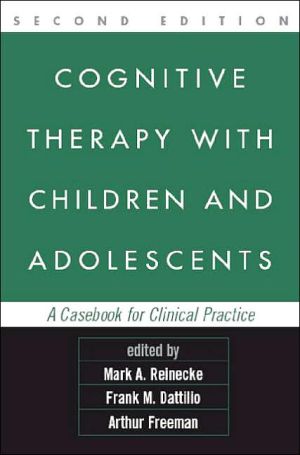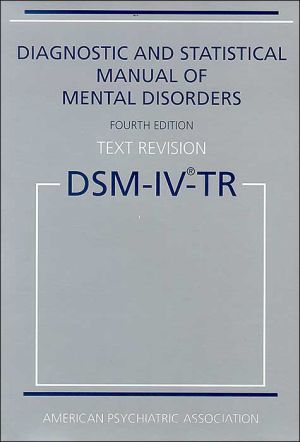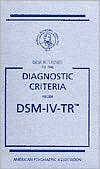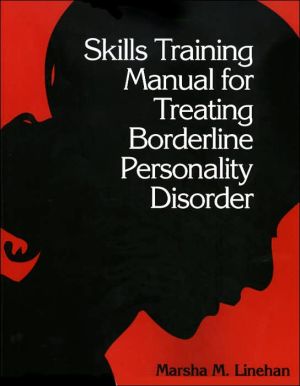Cognitive Therapy with Children and Adolescents: A Casebook for Clinical Practice
Now in a revised and updated second edition, this clinically oriented casebook and text presents empirically supported interventions for a wide range of child and adolescent problems. Leading cognitive-behavioral therapists demonstrate assessment and treatment approaches that have been carefully adapted--or specially designed--to meet the needs of young patients. Incorporating the latest, most innovative techniques, the volume reflects significant recent advances in knowledge about...
Search in google:
From leading scientist-practitioners, this book presents empirically supported interventions that have been carefully adapted--or specially designed--to meet the needs of children and adolescents and their families. Each chapter reviews the literature on a specific clinical problem and presents an extended case example demonstrating the process of assessment and treatment. The volume's strong theoretical framework and careful balance of scholarly and practical concerns enhance its utility as a clinical reference and text. A new preface to the paperback edition situates the book within the context of contemporary research developments. Geri R. Donenberg This book contains 19 chapters that cover cognitive models and interventions for diverse child and adolescent problems (e.g., oppositional defiant disorder, depression, learning disabilities, autism, low self-esteem, sexual abuse). Chapter authors maintain a developmental focus and integrate cognitive theory with current empirical literature. Each chapter incorporates an extended case example, including background information, initial assessment data, case conceptualization, specific interventions, and outcome information. The purpose is to provide hands-on case material of cognitive therapy with children, adolescents, and their families, within a developmental framework that integrates cognitive, affective, behavioral, social, and environmental factors and that is based on sound empirical evidence. The objective is a worthy one, and the authors accomplish their goal. This book appears to be written primarily for practitioners of varied disciplines (e.g., psychiatry, psychology) and levels of experience (e.g., student, experienced therapist) who are interested in learning about cognitive therapy with children and adolescents. Mental health professionals in a variety of settings (i.e., school, clinic, hospitals) will find the reviews of the literature informative and the case material illuminating and instructive. Contributors include some of the most experienced researchers and clinicians in the cognitive therapy field. Some of the chapters include empirical data, tables, and figures to supplement the text. Reference lists are thorough and relatively recent. A subject index is provided, but there is no author index. This book includes well-written and easy-to-read chapters thatfill an important void in the literature. Descriptive case studies are presented that offer step-by-step guidelines and techniques for cognitive interventions with youth. The emphasis on a developmental approach to treatment is unique and important. This book is likely to be an important resource for anyone interested in the nuts and bolts of cognitive therapy with young people.
Cognitive Therapy with Children and Adolescents\ A Casebook for Clinical Practice \ \ The Guilford Press\ Copyright © 2003 The Guilford Press\ All right reserved.\ ISBN: 1-57230-853-2 \ \ \ Chapter One\ Strategies to Modify Low Self-Esteem in Adolescents \ STEPHEN SHIRK REBECCA BURWELL SUSAN HARTER\ Concerns about poor self-image and low self-esteem are common among the problems presented by parents of clinic-referred adolescents. Although problems with self-esteem are not recognized as a disorder or syndrome, self-related difficulties in the form of low self-worth, unstable self-image, high self-criticism, and distorted self-evaluations are among the diagnostic or associated features of a wide range of disorders. Low self-esteem is identified most commonly with depressive disorders and is included among the defining features of both dysthymic disorder and major depressive disorder (DSM-IV; American Psychiatric Association, 1994). However, low self-esteem is an associated feature of attention-deficit/hyperactivity disorder, oppositional defiant disorder, social phobia, and bulimia nervosa (see, e.g., American Psychiatric Association, 1994).\ Research indicates that low self-esteem is found among adolescents with learning disabilities (Boetsch, Green, & Pennington, 1996), particularly among girls (Heath & Ross, 2000), and is associated with maladaptive academic achievement strategies among non- learning-disabled teens(Aunola, Stattin, & Nurmi, 2000). Low self-esteem also has been found among maltreated older children (Vondra, Barnett, & Cicchetti, 1989) and among children of alcoholic parents (Rodney & Mupier, 1999). Furthermore, low self-esteem has emerged as a predictor of adolescent substance abuse (Unger, Kipke, Simon, Montgomery, & Johnson, 1997), and is common among adolescents with eating disorders (Silverstone, 1990), even among those who do not endorse other depressive symptoms (van der Ham, van-Strien, & van Engeland, 1998). As these findings indicate, low self-esteem, though not a specific disorder, is associated with a range of clinical problems.\ Nevertheless, low self-esteem has not been a prominent target for intervention among cognitive-behavioral therapists (cf. Kendall, 1991). This is surprising in light of developmental formulations of the self as a cognitive-affective representation that is constructed through cognitive processes (Harter, 1999; Leahy & Shirk, 1985). Instead, most cognitive-behavioral research and treatment has focused on self-schemas, that is, cognitive structures that influence attention to and recall of self-relevant information (Leahy, 1985). For example, among depressed youth, self-schemas are assumed to be characterized by overgeneralization ("Since I'm bad at math, I'm a lousy student"), all-or-none thinking ("I'm totally stupid"), and dysfunctional attitudes ("If I fail at one thing, I'm a loser"). Negative self-schema, assessed in terms of memory for negative self-descriptors, has been demonstrated among 8- to 16-year-old clinically depressed youth (Zupan, Hammen, & Jaenicke, 1987). Furthermore, there is growing evidence that the content of self-schemas varies by type of disorder; for example, the self-schema of depressed individuals includes contents pertaining to failure and loss, whereas the contents of anxious individuals reflect social threat (Westra & Kuiper, 1997). Thus, one might reasonably assume that low self-esteem, like other cognitive contents, could result from schematic processing biases or cognitive distortions, and thus represents an important target for cognitive-behavioral intervention.\ There may be other reasons why self-esteem has not been a prominent target for cognitive-behavioral therapy (CBT). A major issue for cognitive-behavioral clinicians concerns the function of psychological constructs. For many, self-esteem is viewed, at best, as a consequence or marker of other pathogenic processes that are responsible for maladjustment. In essence, low self-esteem is typically viewed as a symptom of, rather than a cause of, emotional or behavioral disorders. However, recent research indicates that self-esteem plays a more important functional role in adjustment than once believed.\ First, there is evidence that self-esteem is not only a predictor of various outcomes, but that it also functions as a mediator and/or moderator for various clinical problems. As a moderator, level of self-esteem has been shown to impact the relationship between body dissatisfaction and disordered eating, such that young women with low self-esteem are more likely than those with high self-esteem to develop disordered eating patterns (Twamley & Davis, 1999). In addition, level of self-esteem was found to be an important moderator of treatment response for women with eating disorders (van der Ham et al., 1998). Harter (1986) has demonstrated that self-esteem mediates the relationship between children's perceived social support and competence and their academic motivation. Similarly, research by Juvonen, Nishina, and Graham (2000) reveals that, in addition to loneliness and depression, self-esteem mediates the relationship between perceived peer harassment and school outcomes (including GPA and attendance). Self-esteem appears to be closely linked to peer relationships in adolescence, and findings by Kahle, Kulka, and Klingel (1980) indicate that self-esteem is a better predictor of subsequent interpersonal problems than vice versa. Thus, self-esteem does not appear to be a mere correlate or consequence of other functional pathogenic processes. Rather, self-esteem may be integrally involved in the etiology and maintenance of various forms of child and adolescent psychopathology.\ A second important issue concerns whether it is possible to change self-esteem through psychotherapy. Although self-esteem may play a functional role in adaptive behavior, it may not be responsive to therapeutic interventions. Early meta-analytic results supported this perspective. Few child treatment studies (N = 3) have targeted self-esteem, and those that did produced virtually no effect (mean effect size = .08) (Casey & Berman, 1985). However, in their recent meta-analysis of interventions for self-esteem, Haney and Durlak (1998) uncovered significantly more studies that included self-esteem as an outcome (N = 116), and found substantially larger treatment effects (mean effect size = .47) than reported earlier. This moderate effect size suggests that self-esteem can be improved through treatment. Furthermore, treatments that specifically targeted self-esteem produced significantly larger effects than those that merely included a measure of self-esteem but focused on another treatment target, such as social skills (Haney & Durlak, 1998). Consistent with other results in the child treatment literature (Weisz, Donenberg, Han, & Kauneckis, 1995), findings suggest that treatments that focus on a specific target tend to produce more beneficial effects than treatments that attempt to affect an associated target indirectly. From a clinical standpoint, it appears that changes in self-esteem can be attained through improving adolescents' skills and relationships, but treatment strategies that directly target self-esteem may yield additional benefits.\ A third issue concerns the degree to which changes in self-esteem will translate into improvements in adaptive functioning. Typically, low self-esteem is one of many problems presented at intake. Is there any evidence that modifying self-esteem contributes to general improvements in adjustment?\ One might expect to see limited broadband benefits from specific self-esteem interventions. However, in comparing treatments that focused on self-esteem with those that had a different focus, Haney and Durlak (1998) found that the former set of treatments produced larger effects on collateral problems than the latter. This was true for children with both externalizing and mixed problems, but not for children with internalizing problems, for which both approaches were equally effective (Haney & Durlak, 1998). For example, among children with externalizing problems, self-esteem-focused treatments had approximately twice the impact on collateral behavior problems compared to treatments without a self-esteem focus (effect size = .66 vs. 34). A similar but more pronounced difference was found for academic outcomes (Haney & Durlak, 1998). Although the causal connection between changes in self-esteem and changes in collateral problems remains ambiguous, these results demonstrate that targeted changes in self-esteem are associated with positive changes in other areas of functioning.\ In summary, recent findings indicate that self-esteem plays a functional role in adjustment and can be changed through treatment, especially through treatments that target it for change. Improvements in self-esteem also are linked with other positive outcomes. A critical question, then, is what types of cognitive strategies might be used to modify low self-esteem?\ COGNITIVE STRATEGIES TO MODIFY LOW SELF-ESTEEM\ One of the limitations of meta-analysis is its inability to identify treatment components or processes associated with positive outcomes. In part, this problem is most apparent when a range of treatment strategies are used across reviewed studies. As a result, meaningful aggregation of treatments often is precluded (Haney & Durlak, 1998). But to a large extent, identification of effective strategies in meta-analyses is constrained by the evaluation of broad treatment packages, rather than specific treatment processes in most outcome studies (Shirk & Russell, 1996).\ In an effort to identify promising cognitive interventions, a subset of treatment studies that utilized cognitive procedures was more closely examined. Treatments that included cognitive or cognitive-behavioral terms in the title and that were included in the original meta-analysis by Haney and Durlak (1998) were reviewed. A review of articles produced 12 outcome studies that met the foregoing criteria. All but one study was available for review and a second study that focused on career counseling was excluded, thereby resulting in 10 reviewed articles.\ Only three of the studies were designed as self-esteem or self-concept interventions; the remaining seven included a measure of self-esteem along with other outcome measures. Targeted problems in these studies included self-control problems, anxiety, achievement issues, and, most frequently, depressive symptoms. Like most outcome studies, the majority of treatments involved multiprocedural packages (Shirk, 1999); four studies evaluated a specific treatment procedure such as cognitive restructuring.\ Among the four studies that evaluated a specific procedure, assertiveness training, attribution restructuring, and social reinforcement of positive self-referent statements yielded significant improvements in self-esteem. It is noteworthy that two of these studies directly targeted cognitive processes hypothesized to be associated with self-esteem, and both produced significant positive changes. A fourth study that examined cognitive restructuring failed to produce significant changes in self-esteem, but the intervention was part of a primary prevention program and many students did not report low self-esteem at the start of intervention.\ A number of cognitive or cognitive-behavioral strategies were evaluated in studies that did not specifically target self-esteem. Social problem-solving, self-instructional, and relaxation training were all shown to be associated with reductions in targeted emotional or behavioral problems. Despite improvements in targeted problems, these common cognitive-behavioral strategies did not produce improvements in self-esteem relative to control conditions.\ An exception to this pattern was multicomponent treatment packages for depression. Among three treatments targeting depressive symptoms (which includes low self-esteem), all yielded significant improvements in self-esteem over time, and two produced moderate to large treatment effects relative to controls. All three treatments (Kahn, Kehle, Jenson, & Clark, 1990; Reynolds & Coates, 1986; Stark, Reynolds, & Kaslow, 1987) involved multiple components such as practice in goal setting, problem solving, scheduling pleasurable activities, self-reinforcement, and self-monitoring. Consequently, it is difficult to identify a set of specific treatment processes that account for change in self-esteem. It is noteworthy, however, that all three treatments included procedures that targeted self-evaluative processes such as the accuracy of self-evaluations and distortions in self-standards. Although far from conclusive, this pattern suggests that these treatments actually targeted self-esteem to some degree and that cognitive strategies aimed at restructuring self-evaluative processes had a beneficial impact on self-esteem. For example, Stark et al. (1987) concluded that it is likely that improvements in self-esteem were related to the development of realistic self-standards.\ Overall, then, the results of this focused review suggest that cognitive treatments that target specific self-evaluative processes show significant promise for improving low self-esteem. A number of treatments that included common cognitive-behavioral strategies, but did not specifically target self-evaluative processes, failed to change self-esteem. The only exception to this pattern was one study that improved self-esteem through assertiveness training. The foregoing conclusion, however, is offered with considerable caution. Procedures aimed at altering self-evaluative processes often were embedded in multicomponent treatment packages, and consequently the specific procedures that were responsible for change remain unclear.\ COGNITIVE-BEHAVIORAL FORMULATIONS FOR LOW SELF-ESTEEM\ One interesting finding to emerge from the meta-analysis by Haney and Durlak (1998) was that treatments based on prior self-esteem research produced larger treatment gains than those based on general therapy models (e.g., rational-emotive therapy) or based on investigator-generated hypotheses. This finding appears to be consistent with the notion that the design of treatments should be closely linked to research on developmental psychopathology (Persons, 1989; Shirk & Russell, 1996). As Shirk and Russell (1996) have proposed, intervention strategies should be based on empirically grounded formulations of pathogenic process. That is, selection of specific treatment procedures for a particular case should follow from an assessment of pathogenic processes that contribute to manifest problems. Like most clinical problems, low self-esteem can be reached through different pathways or different processes (Harter, 1999).\ According to the case formulation approach (Shirk, 2000), treatment planning involves answering a series of questions.\ \ Continues...\ \ \ \ Excerpted from Cognitive Therapy with Children and Adolescents Copyright © 2003 by The Guilford Press. Excerpted by permission.\ All rights reserved. No part of this excerpt may be reproduced or reprinted without permission in writing from the publisher.\ Excerpts are provided by Dial-A-Book Inc. solely for the personal use of visitors to this web site. \ \
1What Makes for an Effective Treatment?12Facilitating Understanding and Management of Attention-Deficit/Hyperactivity Disorder193Treatments for Oppositional Defiant Disorder434Recovery Maintenance and Relapse Prevention with Chemically Dependent Adolescents705Modular Therapy for Adolescents with Major Depression956Treatment of Social Anxiety Disorder1287Treatment of Obsessive-Compulsive Disorder1628Strategies to Modify Low Self-Esteem in Adolescents1899Treatment of a Sexually Abused Adolescent with Posttraumatic Stress Disorder21410Treatment of Adolescent Eating Disorders24711Treatment of Academic Skills Problems28112Treatment of Family Problems30413Play Therapy with a Sexually Abused Child33814Treatment of Adolescents and Young Adults with High-Functioning Autism or Asperger Syndrome36915The Quadripartite Model Revisited: Promoting Positive Mental Health in Children and Adolescents40216Personality Disorders among Children and Adolescents: Is It an Unlikely Diagnosis?434Index465
\ From the Publisher"This informative, scholarly work is both developmentally sensitive and clinically valuable. It marries a powerful theoretical foundation with eminently practical and down-to-earth clinical strategies. I highly recommend it."--Steven D. Hollon, PhD, Department of Psychology, Vanderbilt University\ "This is an extremely helpful and information-rich resource for any mental health professional working with children and adolescents. By placing cognitive perspectives and treatment methods within a broader developmental systems perspective, and thus attending to the transactions between the multiple biological, social, and environmental factors that are likely to be implicated in a problem, the editors and contributors give the reader a way of understanding and approaching problems that takes account of the complexities of real life. I highly recommend this text to social work students and practitioners who work in this area."--Sharon Berlin, PhD, School of Social Service Administration, University of Chicago\ "This timely, comprehensive second edition retains the key features and strengths of the original volume. While there are a number of excellent books on cognitive therapy for adults, the application of cognitive therapy to child and adolescent psychopathology still has not been as well described. This volume stands out by virtue of the authors, all of whom are leaders in their respective fields; the coverage, which manages to be very broad without sacrificing depth; and the developmental perspective. Incorporating findings from developmental psychopathology, the book demonstrates how cognitive therapy can successfully attend to the young client's family context and his or her developmental needs, tasks, and trajectories. Covering a wide range of child and adolescent disorders, this book will serve as an excellent text for graduate-level courses in evidence-based treatment. It is also an excellent reference for clinical scientists and practitioners."--Anne D. Simons, PhD, Department of Psychology, University of Oregon\ \ \ \ \ \ \ Child & Family Behavior Therapy"The editors fulfill their goals admirably, providing a wealth of scientific knowledge and integrating it with clinical experience....In managing to bring closer together the rigors of science and the demands of practice, this handbook is well worth readers' attention."--Child & Family Behavior Therapy\ \ \ Cognitive Behavioral Therapy Book Reviews"Each chapter illustrates how skilled therapists can flexibly and creatively adapt standard protocols to a youth's developmental age so that interventions are engaging and effective."--Cognitive Behavioral Therapy Book Reviews\ \ \ \ \ Geri R. DonenbergThis book contains 19 chapters that cover cognitive models and interventions for diverse child and adolescent problems (e.g., oppositional defiant disorder, depression, learning disabilities, autism, low self-esteem, sexual abuse). Chapter authors maintain a developmental focus and integrate cognitive theory with current empirical literature. Each chapter incorporates an extended case example, including background information, initial assessment data, case conceptualization, specific interventions, and outcome information. The purpose is to provide hands-on case material of cognitive therapy with children, adolescents, and their families, within a developmental framework that integrates cognitive, affective, behavioral, social, and environmental factors and that is based on sound empirical evidence. The objective is a worthy one, and the authors accomplish their goal. This book appears to be written primarily for practitioners of varied disciplines (e.g., psychiatry, psychology) and levels of experience (e.g., student, experienced therapist) who are interested in learning about cognitive therapy with children and adolescents. Mental health professionals in a variety of settings (i.e., school, clinic, hospitals) will find the reviews of the literature informative and the case material illuminating and instructive. Contributors include some of the most experienced researchers and clinicians in the cognitive therapy field. Some of the chapters include empirical data, tables, and figures to supplement the text. Reference lists are thorough and relatively recent. A subject index is provided, but there is no author index. This book includes well-written and easy-to-read chapters thatfill an important void in the literature. Descriptive case studies are presented that offer step-by-step guidelines and techniques for cognitive interventions with youth. The emphasis on a developmental approach to treatment is unique and important. This book is likely to be an important resource for anyone interested in the nuts and bolts of cognitive therapy with young people.\ \ \ \ \ BooknewsPresents strategies and techniques for using cognitive-behavioral therapy with adolescents and children in clinical settings. Chapters on problems such as ADHD, oppositional behavior, chemical dependency, depression, sexual abuse, eating disorders, learning disabilities, and autism follow a standard format with reviews of the literature, case examples and DSM-IV diagnoses, and demonstration of the use of various techniques. Annotation c. Book News, Inc., Portland, OR booknews.com\ \ \ \ \ From The CriticsReviewer: Gary B Kaniuk, Psy.D.(Cermak Health Services)\ Description: The book describes the application of cognitive-behavioral principles to children and adolescents with various clinical disorders. This is a second edition, the first being published in 1996.\ Purpose: According to the editors, "this volume provides an overview of recent advances in cognitive-behavioral treatments of behavioral and emotional difficulties experienced by youth." The book meets the worthy objectives.\ Audience: According to the editors, "...this volume will be kept close at hand by all practitioners working with children and adolescents, as well as researchers and advanced students in clinical psychology, psychiatry, and related mental health fields. It can be used as either a primary or supplemental text in child clinical psychology and psychotherapy courses." The editors and contributors are definitely credible authorities in the subject matter of the book. In fact, these writers are some of the most important contributors to the cognitive-behavioral tradition in this generation.\ Features: The book covers the application of cognitive-behavioral principles to childhood disorders, such as ADHD, oppositional defiant disorder, anxiety disorders, low self-esteem, eating disorders, and chemical dependency. The book is good because it includes case examples and it is practical. Many of the chapters offer specific treatment strategies. Though it is not exhaustive, it is a good springboard to seek out other books which are devoted to just one topic. In addition, the editors and contributors are renowned experts in the field. This book is easy to read and remains faithful to the cognitive tradition.\ Assessment: This is an excellent book, easy-to-read and contains important information. Many of the contributors are well known and long-time researchers in the field. The book covers many disorders, which is both a weakness and a strength. This second edition does justify replacing the first because there has been so much research in the field since 1996.\ \ \ \ \ 4 Stars! from Doody\ \








